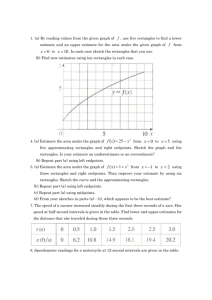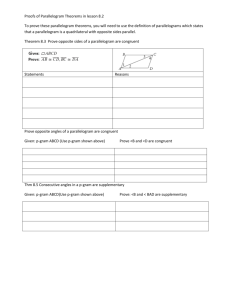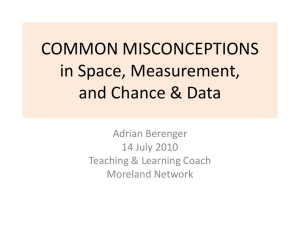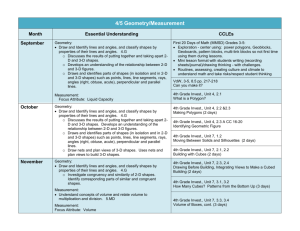LessPlanMath
advertisement
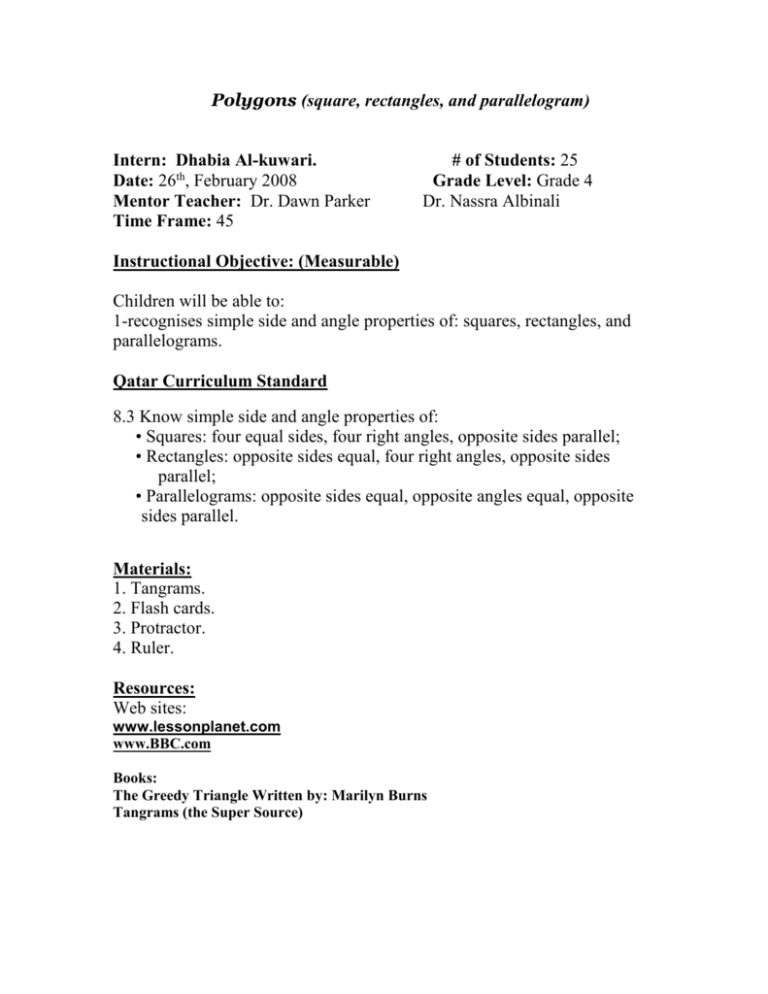
Polygons (square, rectangles, and parallelogram) Intern: Dhabia Al-kuwari. Date: 26th, February 2008 Mentor Teacher: Dr. Dawn Parker Time Frame: 45 # of Students: 25 Grade Level: Grade 4 Dr. Nassra Albinali Instructional Objective: (Measurable) Children will be able to: 1-recognises simple side and angle properties of: squares, rectangles, and parallelograms. Qatar Curriculum Standard 8.3 Know simple side and angle properties of: • Squares: four equal sides, four right angles, opposite sides parallel; • Rectangles: opposite sides equal, four right angles, opposite sides parallel; • Parallelograms: opposite sides equal, opposite angles equal, opposite sides parallel. Materials: 1. Tangrams. 2. Flash cards. 3. Protractor. 4. Ruler. Resources: Web sites: www.lessonplanet.com www.BBC.com Books: The Greedy Triangle Written by: Marilyn Burns Tangrams (the Super Source) TEACHING PROCEDURE Focus: (5M) After starting the lesson by greeting the student and asking them about the date and the day, the teacher will read a story (The Greedy Triangle) about shapes. Reading this story contributes to children's learning by presenting shapes in a combination of real-world and imaginary contexts. The story invites children to wonder about what happens to shapes as they get more angles and introduces children to the names of polygons and their properties with posted some pictures of polygons on the board. After reading the story and talking about the polygons in general the teacher will choose from the board the three polygons that student will be taught this day (square, rectangles, and parallelogram). Teacher will mention the objective after focusing on the lesson. Teacher Strategies (5M): Reading the story and explain the shapes properties and stated the shapes in the story on the board then stated the three shapes teacher will teach (square, rectangles, and parallelogram). Then teacher will say: today we will study simple side and angle properties of: squares, rectangles, and parallelograms. Ask students to do a square using the tangram and ask them to explain how do they do it and why. Then let students work as a group to reach a conclusion for the properties of these shapes (square, rectangles, and parallelogram) according to their sides and angles. Student Activities: The first activity: (5M). Ask students to do a square using the tangram. The second activity: (5M). This will be a group work which will be an exercise to measure the sides and angles for (square, rectangles, and parallelogram). Each group will have one of these shapes to measure then to reach a conclusion for the properties of these shapes. Modifications / Differentiation: (5M) For student with slower progress teacher will model how to measure shapes and help them to reach the conclusion. Lesson Extension: (5M) Ask students to draw the three polygons (square, rectangles, and parallelogram) using a dotted plate and a rubber. Closure: (5M). Restate the properties of each shape and restate the similarity and differences between them. Assessment: As a home work student will search in magazine or internet for a pictures of objects contains (square, rectangles, and parallelogram).
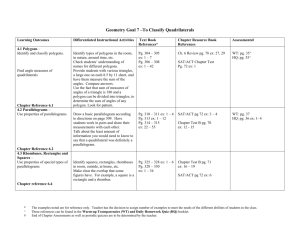


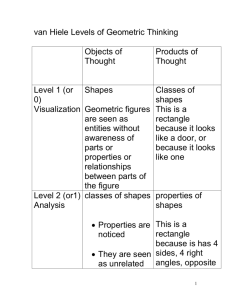
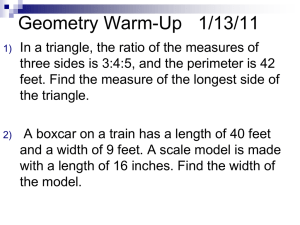
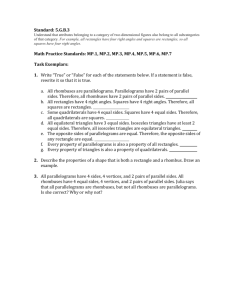

![Property`s Of 2D and 3D Shapes.! :] - Odessa R-VII](http://s2.studylib.net/store/data/005712562_2-5f3fcc92381e7510fd57ce4e0ef497c8-300x300.png)
